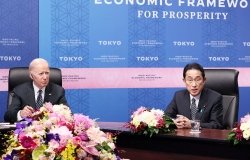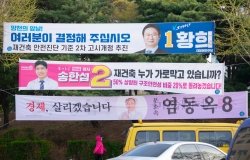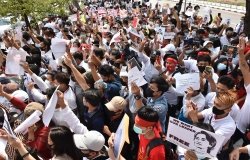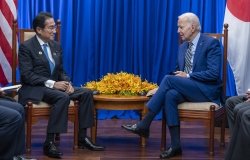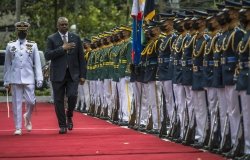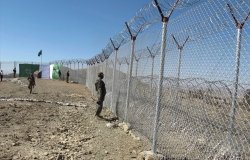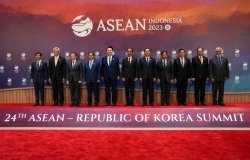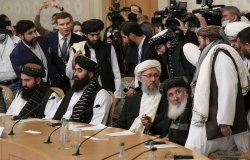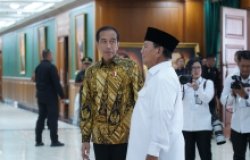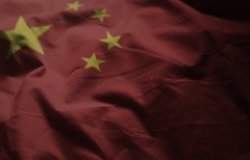
A blog of the Indo-Pacific Program
Ringing in 2018 with the Indo-Pacific in Mind
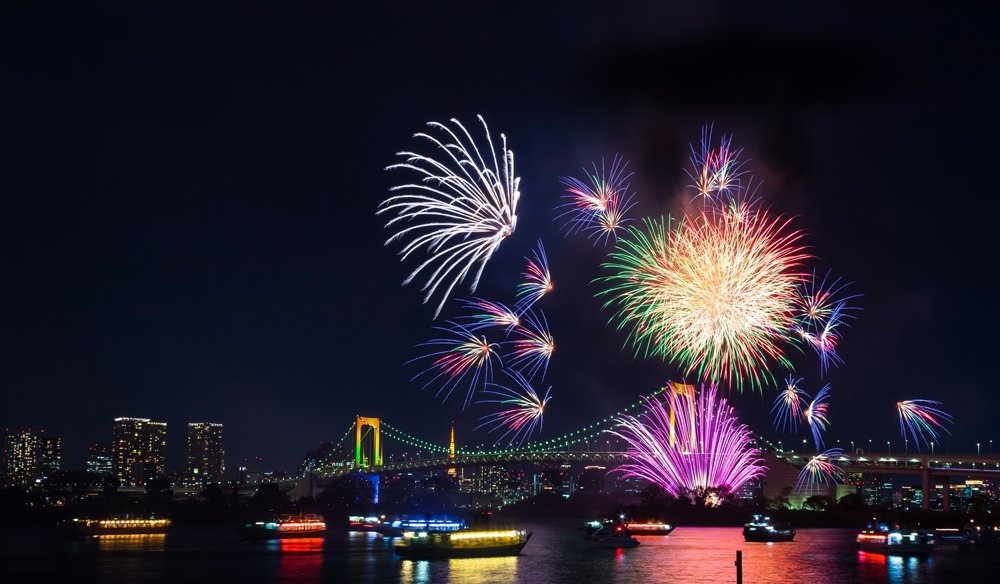
Can the Indo-Pacific strategy be more than a slogan and actually become a policy goal? That’s certainly a challenge Japan is willing to take on in 2018. While the country officially rings in the new year over the course of three days, that tradition didn’t stop Foreign Minister Taro Kono from curtailing his vacation for a three-day tour of three countries bordering the Indian Ocean to bolster Tokyo’s clout as an Asian leader.
Kono’s whirlwind visit to Pakistan, Sri Lanka, and Maldives as his first overseas engagement should not be a surprise, given Japan’s push to make the Indo-Pacific strategy a reality. The question, though, is whether Japan’s overtures in the region can actually lead to a concrete actions as Tokyo vies to offer an alternative to China’s expansionist actions across the Asia-Pacific. So far, the response from the courted countries seems somewhat tepid, especially with no immediate financial support being offered. Rather, Kono concentrated on promoting cooperation confronting common challenges, from confronting terrorism to dealing with the North Korean threat as he touted the need for the Indo-Pacific region to adhere to the rule of law in order to remain vibrant. Tokyo’s moves to go beyond its traditional comfort zone of economic diplomacy and push to promote the liberal international order is a worthy one, especially as the Trump administration’s commitment to remain a Pacific power remains in question.
So far, Japan has been successful in keeping the Trans-Pacific Partnership agreement alive even without the United States. The continuation of TPP with 11 of the original 12 member countries will keep the door open for Washington to return to the multilateral trade deal. But the Indo-Pacific strategy is not only far more ambitious in the scope of its aspirations, it is also still fledgling. It’s a sharp contrast to China’s Belt and Road initiative and the Asian Infrastructure Investment Bank are not only up and running, but they also have begun providing much-needed Chinese capital and support. The downside risk of Chinese financial assistance is that the loans (and they are mostly loans with interest, albeit at a low rate) ultimately places furthering China’s own nationalist interest as the priority, rather than encouraging the economic success of borrower.
Sri Lanka has certainly seen first-hand the risk of leaning too heavily on Chinese influence. Its airport in Mattala, financed by Beijing, has a revenue of $300,000 a year but the country must pay back China nearly $24 million a year for the next eight years in order to service its debts. Meanwhile, China now has a 70 percent stake in the Hambantota port in exchange for writing off $1.1 billion in debt, essentially making it a Chinese controlled port. While Colombo may regret its decision to depend so heavily on Chinese capital, the fact remains that Sri Lanka needs more money to bolster growth. The allure of China will remain in spite of the lessons learned from Sri Lanka’s experiences precisely because China is able to provide much-needed financial gain.
U.S. support for the Indo-Pacific strategy is a welcomed development, and President Trump offering his verbal support for the plan during his tour of Asia late last year gave it much-needed momentum. But for the strategy to gain ground, an economic component that goes beyond simply laying out the rules of trade will be critical. Without it, espousing the values of free and open region will find it difficult to grow beyond words.
The views expressed are the author's alone, and do not represent the views of the U.S. Government or the Wilson Center. Copyright 2018, Asia Program. All rights reserved.
Image Source: Wikimedia/Kakidai (CC BY-SA 4.0)
About the Author

Shihoko Goto
Shihoko Goto is the director the Indo-Pacific Program at the Wilson Center. Her research focuses on the economics and politics of Japan, Taiwan, and South Korea, as well as US policy in Northeast Asia. A seasoned journalist and analyst, she has reported from Tokyo and Washington for Dow Jones and UPI on the global economy, international trade, and Asian markets. A columnist for The Diplomat magazine and contributing editor to The Globalist, she was previously a donor country relations officer for the World Bank and has been awarded fellowships from the East-West Center and the Knight Foundation, among others.
Read More
Indo-Pacific Program
The Indo-Pacific Program promotes policy debate and intellectual discussions on US interests in the Asia-Pacific as well as political, economic, security, and social issues relating to the world’s most populous and economically dynamic region. Read more
